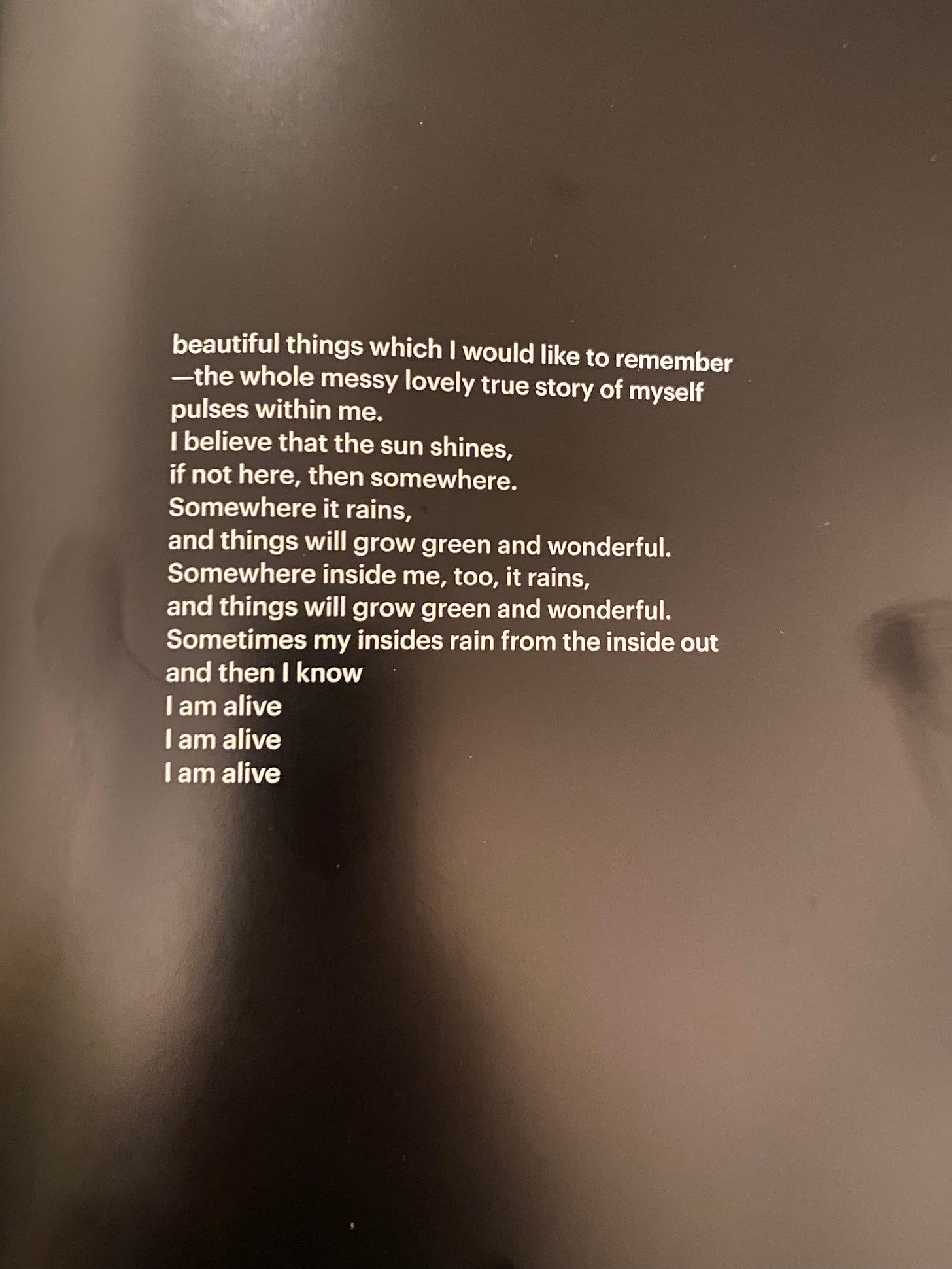In wrapping up Black Futures month at Murmur Library I wanted to talk a little about the book that inspired everything that came out of this month… for me, and I hope for the rest of the community.
Curated by Kimberly Drew and J Wortham, Black Futures refuses to define Blackness in rigid terms. Instead, it expands it across pages and timelines, across grief and abundance, across form and feeling. The book reads like a collage, a digital scroll translated into print: essays, tweets, artworks, manifestos, recipes, photographs, memes. It pulses with a sense of now and next, asking not just what has been, but what could be, if we dream with courage and rigour.
Holding Black Futures in my hands for the first time was akin to what I would imagine a religious experience would feel like. The idea of Modern Scriptures was something I first came across on the Vibe Check podcast… culture as something reverent and sacred. As something that makes you feel seen, while guiding you through the waves of life. This book is that for me. A joy-soaked, shea butter smelling devotion to Blackness that feels less like reading and more like witnessing a living, breathing archive of Black imagination, grief, joy, resistance, and becoming.
excerpt from Affirmation by Eve L. Ewing
For me, the impact was immediate. As someone who has long searched for texts that affirm multiplicity… of identity, of practice, of vision… Black Futures offered me permission. Permission to work in fragments. To centre joy without bypassing pain. To make something that doesn’t explain itself to a white gaze. It showed me what it means to archive while alive, to name that our stories matter before the world decides they’re worth collecting.
There’s a particular power in the way the book documents digital Black life, the kind of everyday brilliance that blossoms in group chats, on Tiktok, in hashtags that become portals. Drew and Wortham don’t just cite these spaces… they honour them, build with them, and call them sacred. That feels absolutely revolutionary.
But Black Futures doesn’t let us stay in celebration alone. It asks us to reckon with the state, with capitalism, with climate collapse, with surveillance. With burnout. With beauty. With the fact that imagining a Black future is not just aesthetic work, it’s survival work. It’s strategic, spiritual, and deeply rooted in collective memory.
What lingers for me is the invitation to be a part of this ongoing project. To contribute to the archive in whatever way I can. Through writing, through care work, through conversation, through the way I hold space in community, through the work I do with Murmur.
I like the idea of treating stories as scripture, not because they are fixed or infallible, but because they hold sacred truths passed through breath, page, and memory. The Murmur shelves are not just a collection of books; they are a living archive of resistance, dreaming, survival, and joy. In a world where dominant narratives erase or flatten us, the library holds space for the complex, the intimate, the untranslatable. Here, scripture might look like a self-published zine on diasporic longing, a poem about aunty wisdom, a speculative novel where the future is Black, disabled, queer, Indigenous and thriving. A sanctuary of stories that weren’t supposed to last, but did. A decolonial altar built from language, care, and community. Sacred text as intangible, handwritten, photocopied, shared in secret, or screamed into the void.
Black Futures isn't just a book. It's a map. A topographical sketch of possibility, tracing elevation, pressure, hidden fault lines. Documenting where joy crests and grief pools, where resistance gathers like weather.




